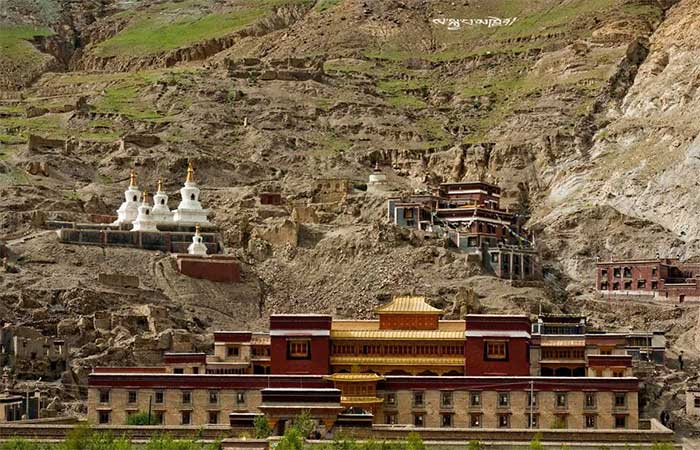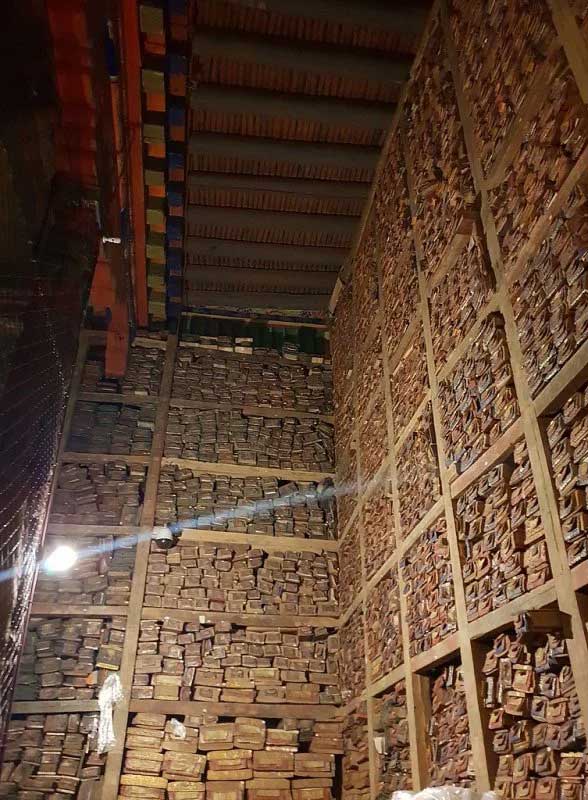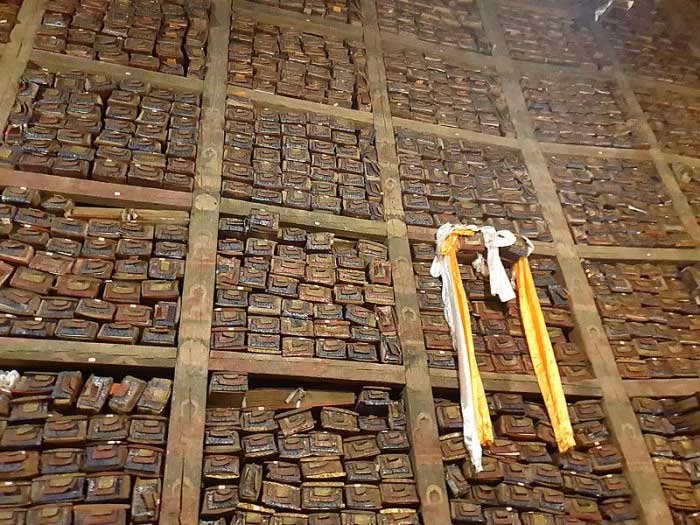The Sakya Monastery: A Treasure Trove of 84,000 Books Preserved for Centuries!
If you’re a book lover and a fan of Tibetan culture, you will find the ancient Sakya Monastery in Tibet incredibly captivating. This monastery is one of the largest and oldest in the world, housing a collection of 84,000 books stacked on traditional shelves that are 60 meters long and 10 meters high.
Sakya Monastery is a Buddhist monastery located in the Sagya County of Tibet, China. It is the main monastery of the Sakyapa lineage of Tibetan Buddhism. It was founded in 1073 by Khon Konchog Gyalpo, who built a white palace on a gray hill near the Chun Qu River. The monastery boasts a vast collection of scriptures, murals, and thangkas of Tibetan Buddhism.

The Sakya Monastery currently preserves thousands of statues, paintings, murals, thangkas, mandalas, and various ritual implements, as well as countless scriptures in Tibetan, Chinese, Mongolian, and Sanskrit. Many thangkas in the monastery date back to the Yuan Dynasty (1271-1368), and the monastery currently holds over 3,000 thangkas. These thangkas depict Tibetan Buddhist deities or illustrate historical and natural scenes. Thangkas are used in Tibetan Buddhism as tools for disseminating the teachings of Buddhism.
The majority of the texts in Sakya Monastery are Buddhist scriptures, but they also cover a wide range of topics, from astronomy to mathematics, history to art, literature to philosophy. Among them are some very rare and valuable books, such as a scripture weighing over 500 kg, considered the heaviest scripture in the world, and a large manuscript displayed at the end of the monastery room that is written in gold and dates back 800 years—this is the largest and longest scripture in Tibet. The monastery also contains some of the oldest manuscripts in Tibet, dating back to the 13th century.
According to the Indian scholar of Tibetan language and culture, Das Sharat Chandra (1849 – 1917), “The great monastery of Sakya is located on the shelves along the walls of the Lhakhang Chen-po hall. Here, there are a great many books that have been preserved and written in gold script, measuring 6 feet long and 18 inches wide, with illustrations on the margins of each page, and the first four volumes feature images of a thousand Buddhas.”

Sakya Monastery is considered the largest repository of Buddhist scriptures written on large palm leaves (pattra). These scriptures are written in Tibetan, Mongolian, and Sanskrit. Ancient scholars used iron pens to inscribe scriptures onto palm leaves that are approximately 5 cm wide. Due to the cold and dry climate of Sakya, these palm leaf scriptures have been remarkably preserved to this day.
The Sakya Monastery is not only a treasure trove of knowledge but also a testament to the rich and diverse cultural heritage of Tibet. The books have been collected and preserved by generations of monks and scholars who dedicated their lives to studying and teaching the wisdom of Buddhism as well as other fields of knowledge. The monastery reflects the open-mindedness and curiosity characteristic of the Sakya school of Tibetan Buddhism, founded by Khon Konchog Gyalpo in 1073. The Sakya school is renowned for its emphasis on logic, debate, and scholarship, as well as its political influence and diplomatic relations.

Most of these books are Buddhist scriptures, alongside works on history, literature, mathematics, philosophy, astronomy, medicine, and art. Most of these works date back to the Yuan and Ming Dynasties, carefully handwritten with gold dust, silver, and red ink, and bound into scrolls.
Sakya Monastery is not open to the public but is accessible to members and scholars by permission of the monastery. However, some of the books here are being digitized and will be published by the monastery on an online platform. In the meantime, you can find collections of digitized Tibetan texts from other online sources, such as the Padma Karpo Translation Committee.
The Sakya Monastery is a prime example of how books can preserve and transmit knowledge across time and space. It also serves as a reminder of the importance of protecting and respecting the cultural diversity and heritage of different peoples. If you have the chance to visit this monastery, you will surely be amazed by its scale, beauty, and significance.
|
Thangka is a Tibetan Buddhist painting on cotton or silk fabric, typically depicting a Buddhist deity, scene, or mandala. Thangkas serve as important teaching tools that illustrate the life of the Buddha, various influential lamas, as well as other deities and bodhisattvas. Each type of Thangka usually carries a different meaning, helping manifest wishes such as peace, health, longevity, prosperity, success, or good fortune… |





















































